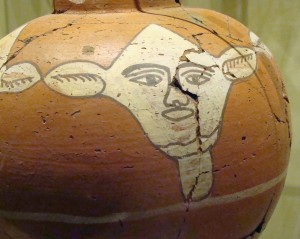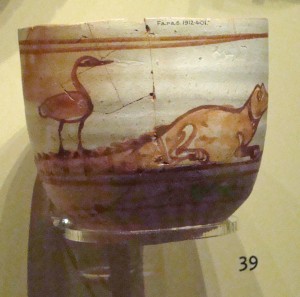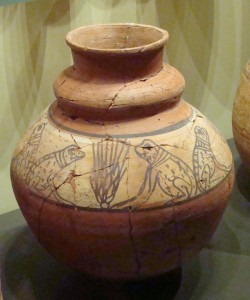A shorter version of this review was originally published on Blogcritics.
Arriving in France to a spring garden in which the nettles stand chest-high with the grass-seed heads waving alongside, it seemed the ideal time to pick up Richard Mabey’s Weeds: The Story of Outlaw Plants. It also turned out to be a book that crossed across many of the environmental news stories of today – as well as being simply a cracking good read. Mabey as a writer really knows how to let an anecdote rip across the page, and his sources and interests are wide and broad though never overwhelming, but he’s also a thinker, and the overview of human interaction with nature – our sheer blazing ignorance and careless destructiveness – come strongly through as a theme of Weeds.
One topical story is that of ragwort – a “weed” that last year got a UK government minister hellbent on its destruction as a “vile” plant into a lot of (entirely deserved) hot water. He quotes the country poet John Clare’s early 19th-century view of it as displaying “beautys manifold” in a “sunburnt & bare” spot on a degraded meadow, contrasting it with 20th-century hysteria about the poisoning of grazing animals, particularly horses. Mabey notes: “Neither wild nor domestic animals will usually eat growing ragwort if other forage is available. The vast majority of poisoning cases are from dried plants which have been cut with hay and, ironically, from wilted and shrunk specimens which have been sprayed with herbicide (the plant is just as toxic when dead, and less easily recognised by animals.)… Clare accepts ragwort as one of the adornments of the summer landscape, even by the side of the ‘waggonways’ used by horses. \the absence from the poem of any reference to local hostility (often mentioned in connection with other species) suggests there was some kind of rapprochement with the plant. It was a weed to be respected, not demonised.)” (p. 123)
Another strong theme now in the news is the overall massive loss of diversity over past centuries, but particularly last decades – highlighted today by news of how “the wholesale ripping up of hedgerows, draining of wetlands and ploughing over of meadows” has led to the loss of 50% of Europe’s farmland birds, and about the farming time-machine needed to try to reintroduce the short-haired bumblebee into Britain.
Mabey travels with a young Finn, Pehr Kalm, who in 1748 visited the farm of the celebrated British improver William Ellis. It was March, before plants had flowered, so the young visitor sorted through dried hay to establish what mix of species grew in the rich pastures. (The same method, Mabey notes, is still used by ecologists today.) There were 29 species, only nine of them grasses, “including several that would be regarded as grassland weeds today – hoary plantain, daisy, yarrow, knapweed, hawkweed” and, predominately what we now see as a lawn weed, bird’s-foot trefoil… which Ellis “praised beyond compare and set before all other grass species in his Modern Husbandman … to be in the highest perfection the most proper hay for feeding saddle-horses, deer, sheep and rabbits, as well as cattle”. (p.129) Mabey notes we now know that many of these despised “weeds” have higher nutritional value than the grasses they are killed with herbicide to make space for.
He also notes how many of the plants we now seek to destroy with noxious chemicals were put to good use – gorse, as a fuel plant, especially for bread ovens, and bracken, used to fuel brick and bread baking, and also as a litter for animals in the farmyard that then became an excellent manure for wheat, pea and corn crops. Mabey explains how on a common near his home, a radical local landowner in 1866 led a campaign of direct action against the enclosure of the common the Finn was describing. “On the day the fences were torn down, the local people flocked up to Berkhamsted Common and picked token sprigs of gorse to celebrate that the place was theirs again. Until the commons were finally sold off in the 1920s, the locals adhered to courteous and frugal codes to ensure the survival of their weed resource. There was a close-season for the gorse and bracken, between 1 June and 1 September. On 31 August the commoners would listen for the chimes of the parish church at midnight, and go up to stake out their claims, like gold prospectors.” (p. 130)
Then there’s the “hot” question of how much we can continue to engage in large-scale monoculture, maybe with genetically modified crops to deal with the multiple problems, an issue that’s being played out in Britain today in a dispute over GM wheat. There’s good cause to be worried about the risks of this controversial trial, but even more cause to be concerned about an attempt to use a simplistic solution to allow the continuation of our destructive broad-scale farming systems. Nature’s a lot smarter and faster than we are, as Mabey illustrates with the example of the rice bred for South-East Asian conditions too “out-smart” weed grasses. “In the rice paddies… there are weed grasses so similar to cultivated rice that farmers are unable to distinguish them before the wild grasses bloom. Plant breeders thought they might be able to trick the weed into showing itself by developing a variety of rice with a purple tinge. Within a matter of years the weed grass had turned purple too. The slight pigment that had enable plant breeders to develop the coloured rice also occurs occasionally in the weed. With each successive harvets it was this strain that … passed into next year’s seed store.” (p. 45)
read more »




 About
About